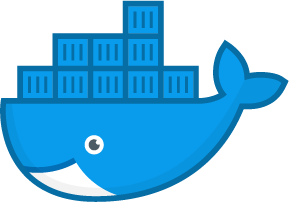Docker Networking
For Docker containers to communicate with each other and the outside world via the host machine, there has to be a layer of networking involved. Docker supports different types of networks, each fit for certain use cases.
What are different types of Networking in Docker
Docker comes with network drivers geared towards different use cases. Docker’s networking subsystem is pluggable, using drivers.
What is docker0 in terms of Docker Networking
When Docker is installed, a default bridge network named docker0 is created. Each new Docker container is automatically attached to this network, unless a custom network is specified.
Besides docker0, two other networks get created automatically by Docker: host(no isolation between host and containers on this network, to the outside world they are on the same network) and none(attached containers run on container-specific network stack)
-
Host networks
Using host network driver for a container, that container’s network stack is not isolated from the Docker host, and use the host’s networking directly. Host is only available for swarm services on Docker 17.06 and higher. The host networking driver only works on Linux hosts, and is not supported on Docker for Mac, Docker for Windows, or Docker EE for Windows Server.
-
Bridge networks
The default network driver. If you don’t specify a driver, this is the type of network you are creating. Bridge networks are usually used when your applications run in standalone containers that need to communicate. A bridge network uses a software bridge which allows containers connected to the same bridge network to communicate, while providing isolation from containers which are not connected to that bridge network.
-
Macvlan networks
Legacy applications expect to be directly connected to the physical network, rather than routed through the Docker host’s network stack. Macvlan networks assign a MAC address to a container, making it appear as a physical device on your network. The Docker daemon routes traffic to containers by their MAC addresses. We need to designate a physical interface on our Docker host to use for the Macvlan, as well as the subnet and gateway of the Macvlan.
-
None networks
This mode will not configure any IP to the container and doesn’t have any access to the external network as well as to other containers. It does have the loopback address and can be used for running batch jobs.
-
Overlay networks
You have multiple docker host running containers in which each docker host has its own internal private bridge network allowing the containers to communicate with each other however, containers across the host has no way to communicate with each other unless you publish the port on those containers and set up some kind of routing yourself. This is where
Overlay networkcomes into play. With docker swarm you can create an overlay network which will create an internal private network that spans across all the nodes participating in the swarm network as we could attach a container or service to this network using the network option while creating a service. So, the containers across the nodes can communicate over this overlay network.
Few Basic commands
1. How to assign Static IP address to a Container
- Create a new bridge network with your subnet and gateway for your ip block
$ docker network create --subnet 198.0.125.0/24 --gateway 198.0.125.254 mystaticip
- Run a nginx container with a specific ip in that block
$ docker run --rm -it --net mystaticip --ip 198.0.125.2 nginx
- Curl the ip
$ curl 198.0.125.2
2. How to Expose Container Port on Host
$ docker run -d -p 80:80 nginx
- If you have multiple interface, then you will need to provide specific IP. Example:-
$ docker run -p 127.0.0.1:$HOSTPORT:$CONTAINERPORT --name CONTAINER -t image_name
3. Networking Containers on Multiple Hosts with Docker Network work
base=https://github.com/docker/machine/releases/download/v0.14.0 &&
curl -L $base/docker-machine-$(uname -s)-$(uname -m) >/tmp/docker-machine &&
sudo install /tmp/docker-machine /usr/local/bin/docker-machine
